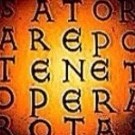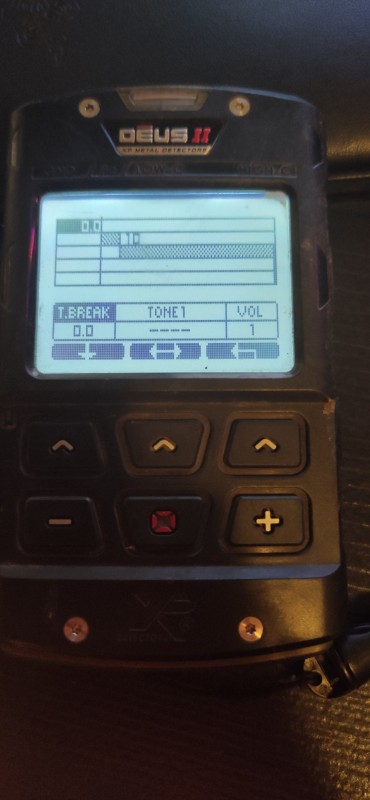
raziel900
Full Member-
Posts
63 -
Joined
-
Last visited
Profile Information
-
Gender
Male
-
Gear In Use:
nokta makro legend- xp deus II
Recent Profile Visitors
450 profile views
raziel900's Achievements

Contributor (2/6)
48
Reputation
-
Tekkna For The Deus 2, First Impression (Updated 3)
raziel900 replied to F350Platinum's topic in XP Deus II Forum
what do you mean?? -
Tekkna For The Deus 2, First Impression (Updated 3)
raziel900 replied to F350Platinum's topic in XP Deus II Forum
-
Tekkna For The Deus 2, First Impression (Updated 3)
raziel900 replied to F350Platinum's topic in XP Deus II Forum
program number 3 with the aggressive silencer (even at 0) is the least suitable to create a base to unmask targets in the middle of the iron, following the logic I would have taken as a basis the program number 2, this is to say that logic is worth nothing in this hobby, things must be tried... And that's what I did in a medieval site full of iron and modern garbage, guys to my amazement I have to say that he unmasked some very small coins in the middle of that hell,I only changed the discrimination to 35 because some small coins sounded at 38-40 and the iron volume to 7....I was amazed and I must say that it works very well and if it works very well in a land with ancient bricks, iron of all sizes and modern garbage I think it will be good everywhere! ps: i'm on 1.1 version -
Are there any advantages to lowering discrimination (-6.4)? It's the main question of this topic, we discussed it before. I'll give an example because I don't understand what you mean, a non-ferrous target with Tid 70 in a mineralized soil is masked with Tid 7 (ferrous zone) if we have discrimination at 10 that target sounds like a ferrous ok? Now, if in that context we have discrimination at 5, that target sounds like "good" but always with TID 7, right? Or do you mean that by lowering the discrimination that target with "drugged" Tid 7 turns into a Tid close to the real 70 so that coming out of the iron ladder?
-
I'm referring to Paystreak's video, in fact even in other videos he explains that in his highly mineralized soil the high reactivity offers more "depth" in that soil if it lowers the reactivity the target sounds like iron.
-
In Paystreak's video it is the highly mineralized soil that allows it to be drilled better with high reactivity.... Could you use negative discrimination in that context? It would only lead to confusion without any advantage
-
Totally agree with all of you, even if there is no news about it at least not in the videos on youtube, now I understand the meaning of negative discrimination even if in practice I can't imagine how a borderline target could sound better with negative discrimination. Surely we Europeans have different terrains and targets from those who live in the United States for example
-
Can you tell us more about how negative discrimination can help? in unmasking or in deep targets?
-
In the picture I tried to "eliminate" the tone breaks to have a harmonic scale without breaks, more linear and clean tones but if those breaks refer only to the volume then nothing changes
-
Does it make sense to "decrease" tone breaks like in my photo when you're in full tones? I notice that you can't completely eliminate the tone brakes and that they cluster at the bottom. What does it mean?
-
Chase Goldman you told a sacred truth, in the end it's all about hearing and comfort... Less headaches about parameters and give more importance to what sounds best to each of us....thank you ?
-
Thank you for your detailed reply, Believing that using "low" discrimination would bring benefits on unmasking performance, I often use discrimination around 5-6 and when I'm on an iron-infested "field" using pitch tone you can't make out all the targets because some of that iron sounds like a good target forcing you to look at the display every second, That said, and following your words, Deus 2 seems easier than I think. I just need to bring the discrimination to the top 8-9-10 and I'm sure that most of the iron is "discriminated" making the search more pleasant and without affecting the unmasking performance... So I assume that setting a discrimination below 10 is only for those who want to dig iron! or for those who want to make sure of the presence of bricks or ceramics ps:Listening to what XP tells us, program number 3 has a more aggressive silencer even at level 0 therefore less suitable for unmasking targets, because having a low silencer level offers excellent possibilities of unmasking
-
I'll start by saying that I've never used a Deus 1. I own the Deus 2 since it came out on the market, before the updates I heard a lot of complaints about the full tones not working like on the Deus 1 etc.... I never tried them until they updated by adding offset for full tones... Reading here and there I got the idea that the full tones on the Deus would have been the trump card when it comes to separation in environments polluted by iron and more,offering the richest sound identification that XP has implemented.I've never even used negative discrimination -6.4 I've never understood the meaning of it... So I ask you if full tones are actually the best choice when hunting in iron-infested sites and if combining full tones with negative discrimination in these environments where unmasking targets is the priority, can really raise the "performance" of Deus 2.I have very mild soils and the only annoying mineralization in some fields is the massive presence of ancient bricks, I don't consider myself an expert in XP detectors but after more than 500 hours of use I didn't understand when and why to use full tones and negative discrimination
-
It's not the live threshold of the old analogs, it's useless, changing the subject can someone tell me what you lose in terms of performance if you set the ground stabilizer to 3?
-
I don't understand, with the 2.0 update they ruined the threshold again like at the beginning when it was just a sound without mutations?




